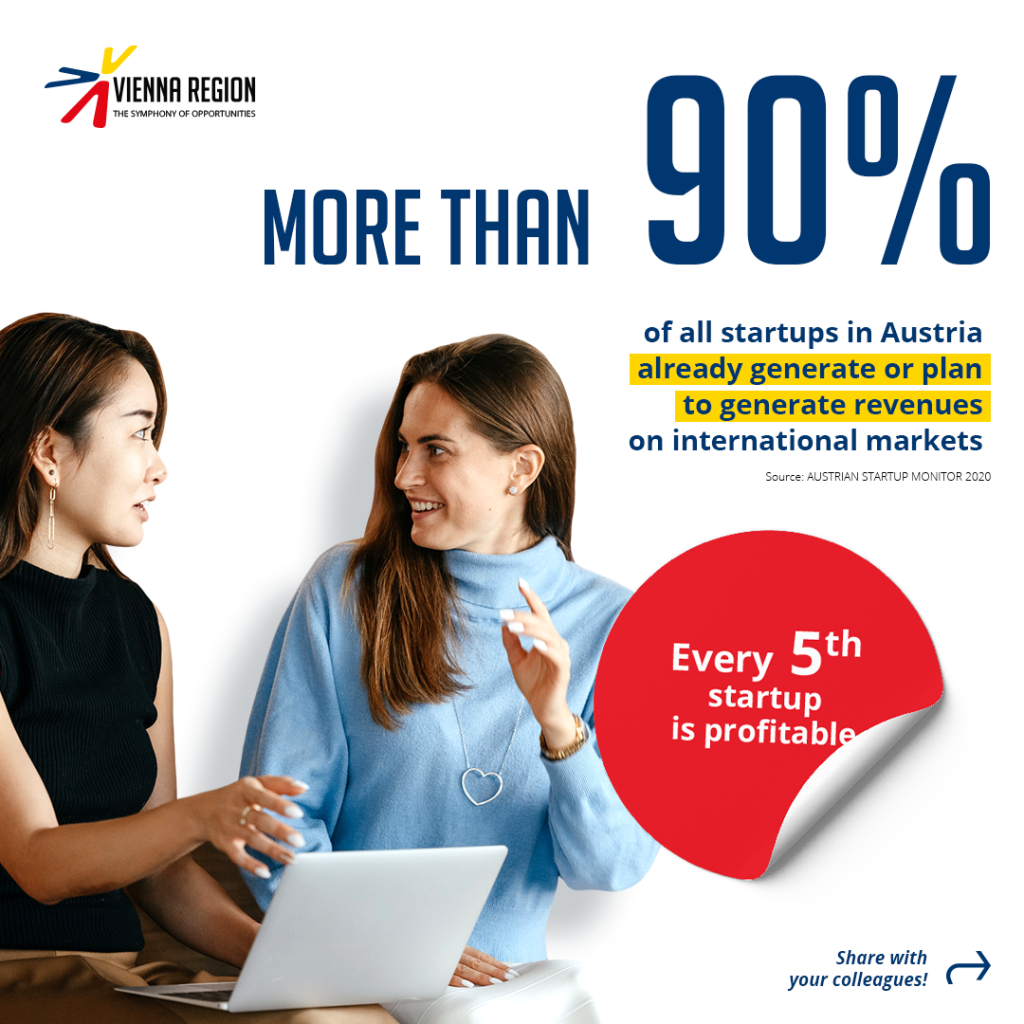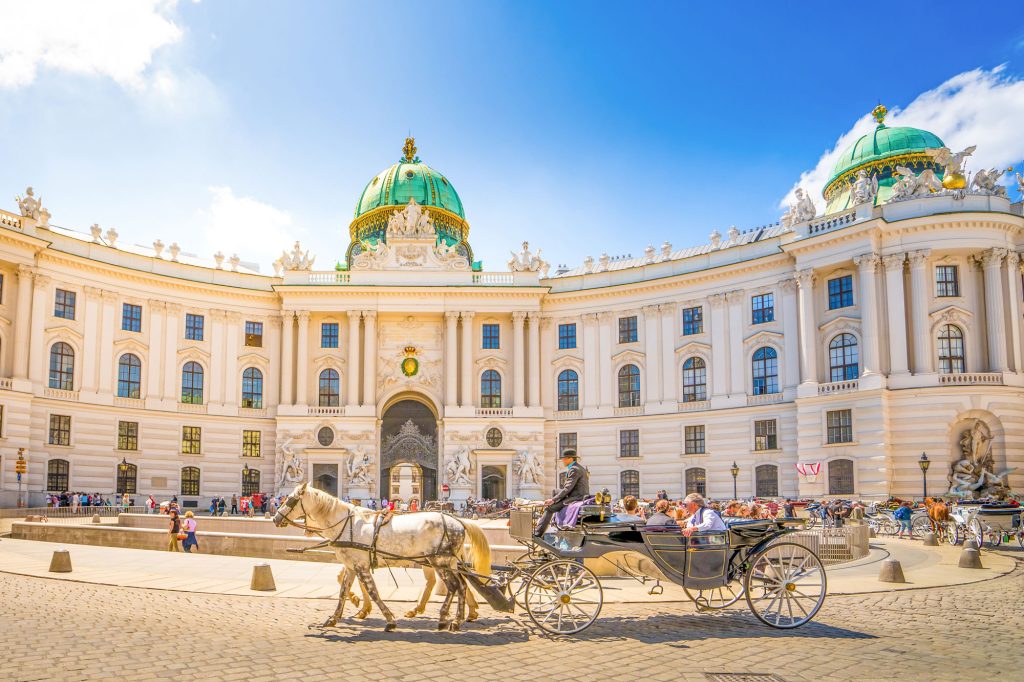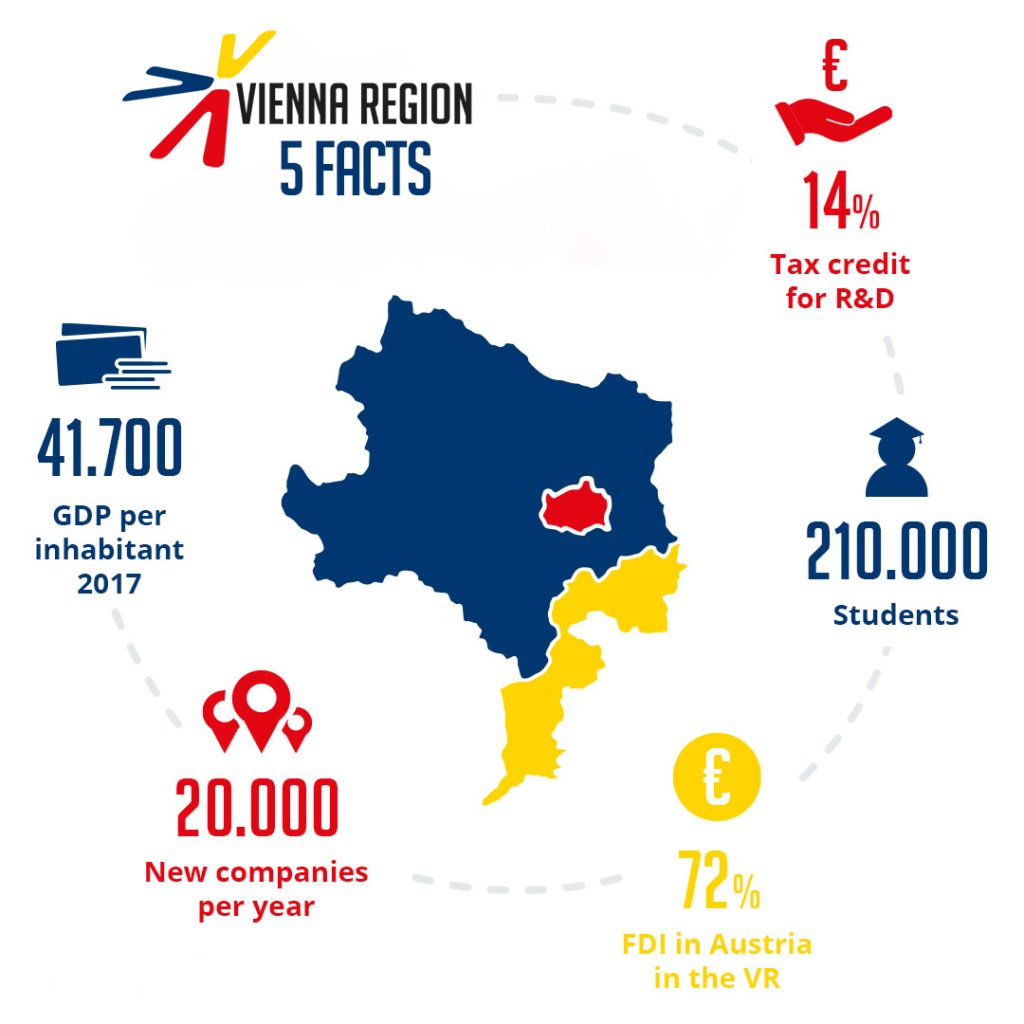vienna-region-raphaela
Vienna Region facts and figures
The Vienna Region is an excellent business location, offering lots of benefits to entrepreneurs. Consequently, it has become home to an abundance of successful companies and start-ups. Data and statistics make success visible and comparable. So here are some facts and figures from the Vienna Region.
Vienna Region facts, data & overview
The Vienna Region has 3,9 million inhabitants with a GDP of 40.300 EUR each. The Austrian Institute of Economic Research (WIFO) announced that in Q1 in 2022, Austrian GDP grew by 8.7% y/y. Given the effects of Covid-19, this growth is surprisingly high.
The GVA (gross value added) is mostly made up of the tertiary sector (service), 28% stem from the secondary sector (industry and construction), and 1.2% come from the primary sector (agriculture and forestry).
The gross domestic product as well as the average income are much higher in Austria than in the Baltics. Contrary to the Baltic states, Austria is an immigration country. The population is growing and thanks to the large number of universities and training facilities lots of skilled employees are available. At 20%, Austria’s sales tax is 5% lower than that of Sweden and 4% lower than that of Finland.
38,600 new companies were founded in 2020, and 77,8% of them are still operational after 3 years. An ever-increasing number of international investors and companies choose to settle in the Vienna Region. There are many factors that attract them.

Employment and purchasing powerCountry comparisons
In the 15 to 64-year age range, the employment rate is 72%. That is higher than the EU average (68%) Among the 27 EU member states Austria has the eighth highest employment rate for that age group (2020). The percentage of working women and men in the age group of 25 to 54 years old is 81% and 87% respectively. (Source: www.wko.at)
Given the high purchasing power of the Austrian population, the Vienna Region is a lucrative market. According to the 2019/20 consumer survey, the monthly consumer spending of private households in Austria amounts to around EUR 3,250 on average.
95% of Austrian households have Internet access. 93% of those 16 to 74 years old actively use the internet and 54% shop online. Digitalization is well received by the public and promoted and subsidized by the government. This is one of the key facts for the future of the Vienna Region and its evolution. The government invests a lot in research and development. Austria is positioning itself as a research location for AI to be well prepared for the changing economic demands.
A Prime location
With its location in the middle of Europe, the Vienna Region also provides perfect access to the growing markets in Central and Eastern Europe. About a tenth of Austria’s exports go to the eastern European countries. Austria’s goods exports in relation to the gross domestic product are 39,3 %. That is a higher number than that of Sweden and Finland.
There are major railway terminals, a teeming international airport, and an extensive motorway network. Freight transport is gaining importance as well. The Vienna Region is a central location, much more interconnected than northern Europe. It is a great place for export in all directions – and it is a location that can be reached easily. The Vienna international trade fair for example attracts exhibitors from all over the world. It takes place twice per year, in March and September. Each year, several hundred thousand visitors attend the fair.
Most elementary school pupils learn at least one foreign language (usually English). Of course, this is quite beneficial for international business and communication. It also makes life easier for ex-pats moving to the Vienna Region.
Vienna
About 20% of the jobs in the country are provided by Vienna. The city generates almost one-third of the gross national product. Vienna produces almost half of Austria’s consumer goods and more than half its capital goods. The manufacture of machinery, chemicals, electrical, and metal products is among the top industries. Tourism also plays an important economic role. About two million vacationers visit the city each year.
Over and over again, Vienna has been voted the most liveable city in the world in city rankings by Mercer or Economist. This high ranking has many reasons some of which are affordable housing prices, an abundance of parks and recreational spaces, personal safety, and great infrastructure.
There are currently 23 universities in Vienna as well as approximately 1500 research facilities and almost 50 international institutions and 208 international company headquarters. The city is a hub for education, research and innovation, and entrepreneurship.

Lower Austria
The economic growth in Lower Austria is expected to be around 4,9% in 2022. The province is home to 109.000 companies and 8.098 new companies were founded in 2021. Since the year 2000 Lower Austria’s economy has grown by 82%. Every fifth company in Austria is founded in Lower Austria and more than half of them are set up by women. Diversity is one of the strengths of the region, with many different businesses and suppliers being located there. It also attracts a lot of research-oriented companies. Industry occurs for about one-third of the economic output. The industrial sector employs 24,3 % of the total workforce. (Source www.wko.at, www.ecoplus.at)
Stretched-out landscapes and reasonable prices make the region ideal for the production of clean energy. Similar to Burgenland, you can find many opportunities for wind and solar energy as well as hydropower in Lower Austria. The available space is also perfect for storage and packaging warehouses. Due to the rapidly increasing demand, around 1.4 million m² of logistics space is to be built in Austria by 2024. Many international companies have set up successful businesses here.

Burgenland
In the year 2020, 1.549 new businesses were launched in Burgenland. The province was home to 18.992 companies and 105.163 employment relationships.
Burgenland has a lot to offer, including key factors for success in a company. For example, affordable offices and production sites, competent staff, excellent infrastructure, short distances between business and administration, and a high quality of life with 300 days of sunshine a year. The proximity to Hungary, Slovakia, and Slovenia as well as the existing cooperations with these partner countries are stepping stones for successful business coooperation.
Burgenland is developing quickly and intensively. The number of employees increased by 10.5 percent between 2007 and 2013 (the Austrian average increase was 4.3 percent). Burgenland was able to make the strongest gains in purchasing power and income within Austria. The start-up intensity (new business start-ups in relation to already active companies) is the highest in Austria at almost 12 percent.(Source: www.wirtschaftsagentur-burgenland.at)

Vienna Region – the place to be
From whatever angle you take a look at the Vienna Region – facts and figures, key factors, business benefits, lifestyle – it is always appealing and promising. If you are looking for a new business location, The Vienna Region is your perfect destination.
Let me give you five reasons why you should set up your headquarters in the Vienna Region:
- it is part of the 4th richest country of the European Union
- a high quality of life at affordable prices
- Excellent, highly-developed infrastructure
- highly qualified workforce
- outstanding spending capacity of customers
- home to many international companies, universities as well as research facilities
- direct access to South East and Eastern Europe
- high level of personal security, political stability and legal certainty
- an international as well as cosmopolitan region due to a population with migration background
What a founder-friendly location needs is a focus on the global market. Austria’s location in particular makes it an ideal hub for the international start-up scene in Central and Eastern Europe.
Follow our social media profiles for more infos about our region.
https://www.instagram.com/viennaregion/
https://www.facebook.com/viennaregion
https://www.youtube.com/channel/UCLlC_bpHKnWxL0dPgy4qcnQ
https://www.linkedin.com/company/vienna-region-business-location
Would you like to find out more about the Vienna Region?
Visit our blog or our other social media channels. Here you will find the symphony of opportunities in the Vienna Region.

One of the main spots in Austria for business and leisure activities

Traditional coffee houses serving delicious pastries to cozy wine taverns offering local wines and regional specialties, the culinary scene here is a treat for food enthusiasts.

The ViennaUp’23, a groundbreaking tech festival taking place from 30.05 – 07.06 in the vibrant Vienna Region.